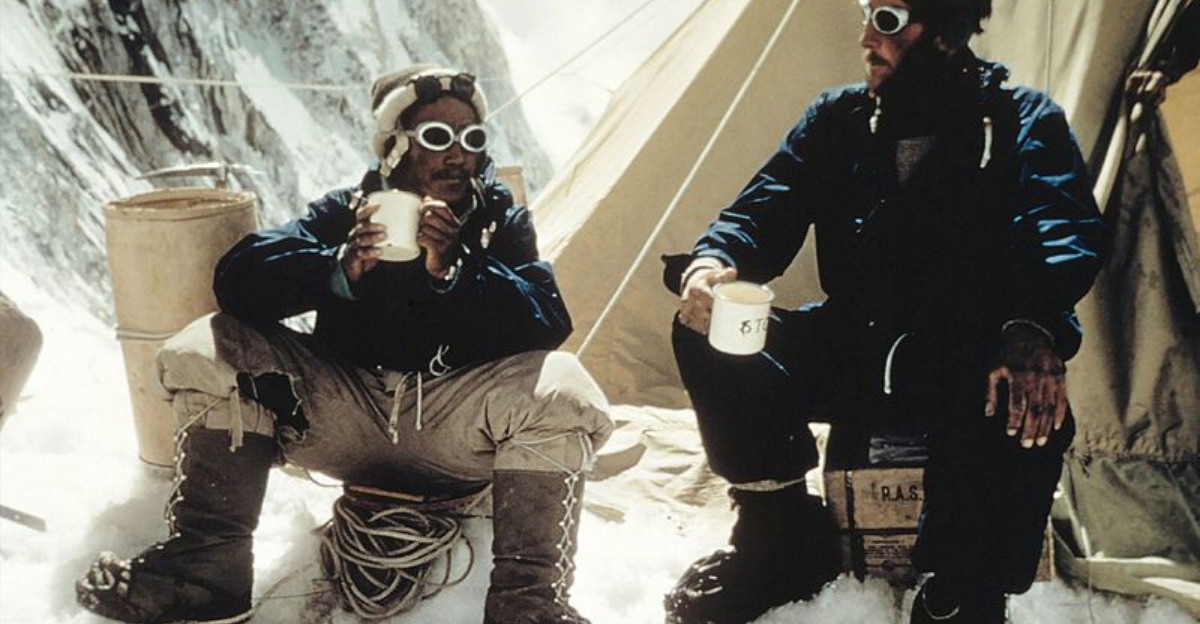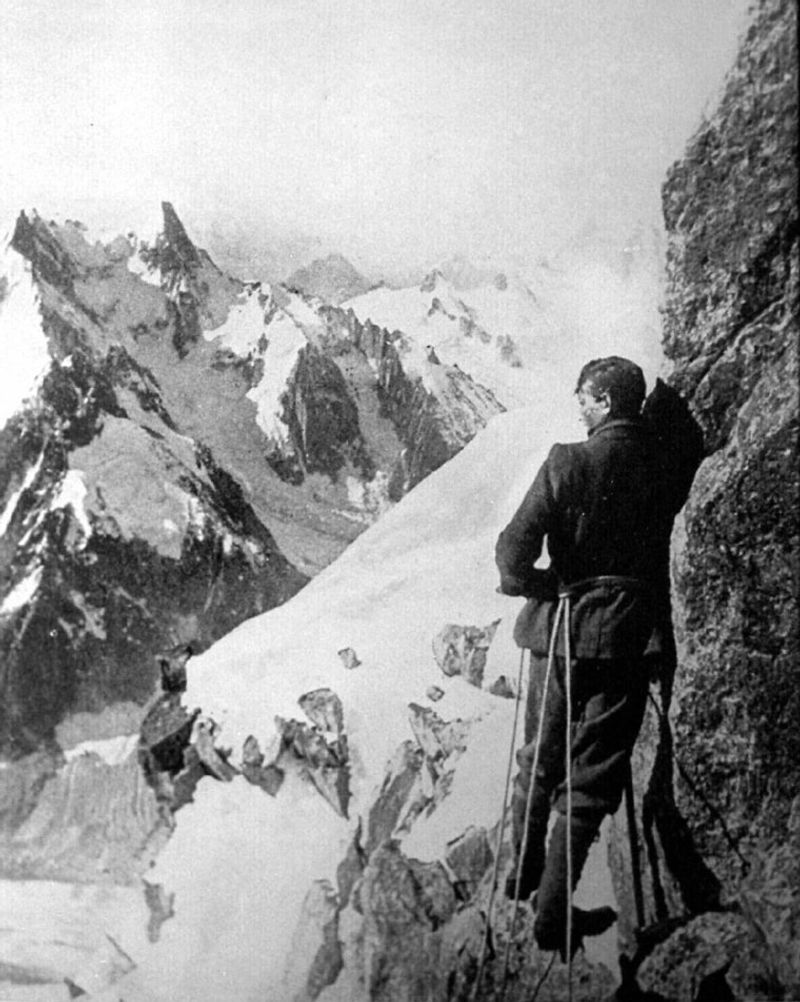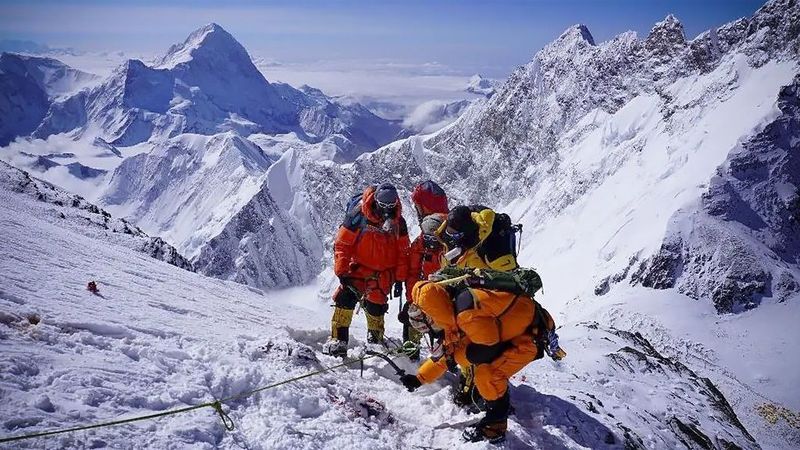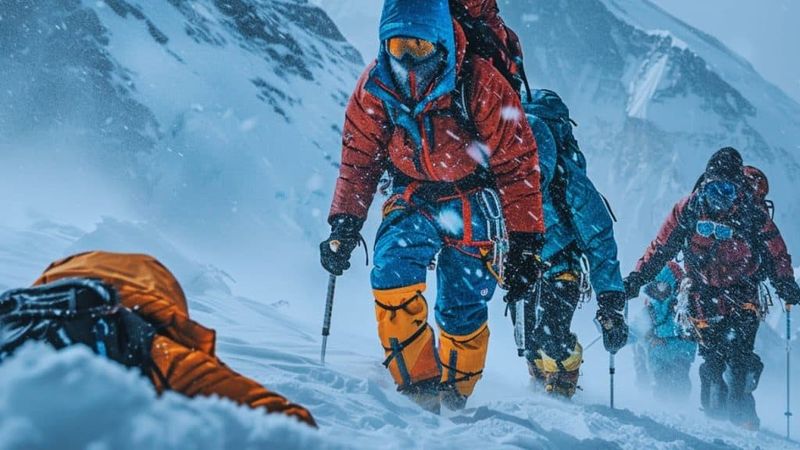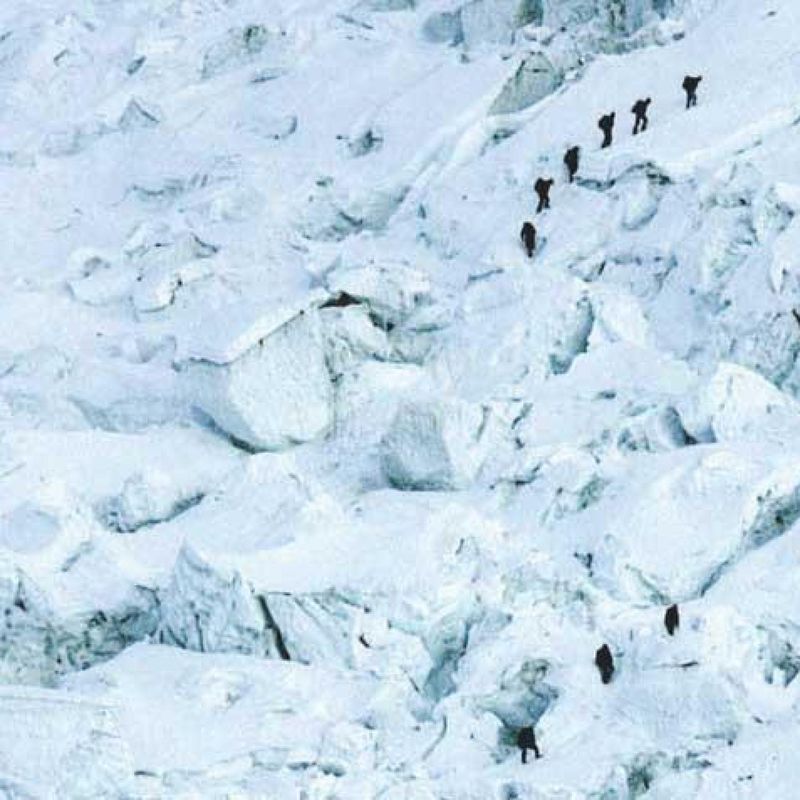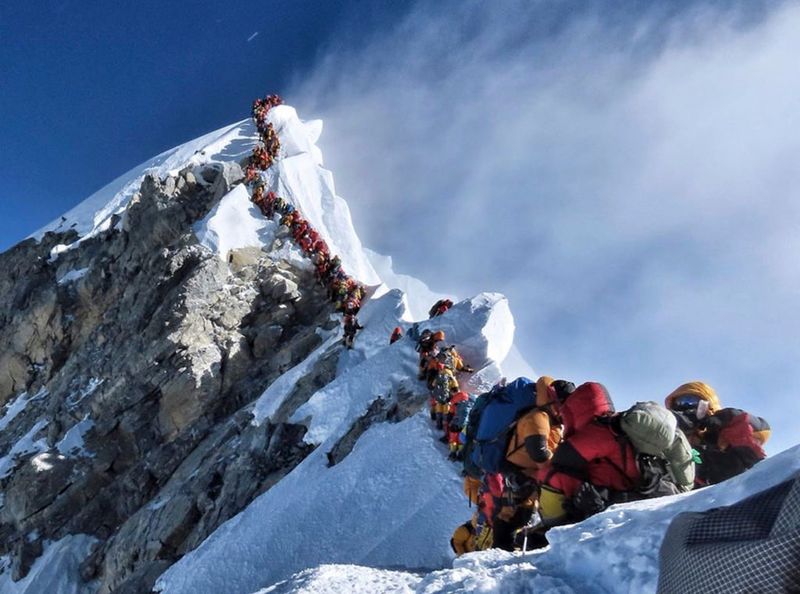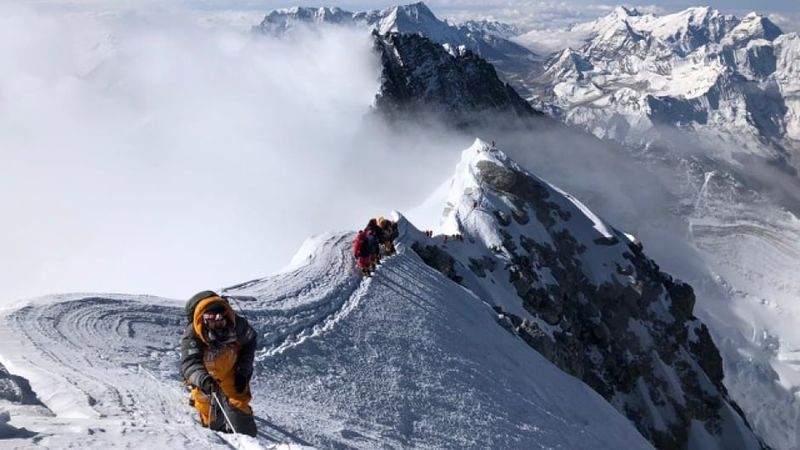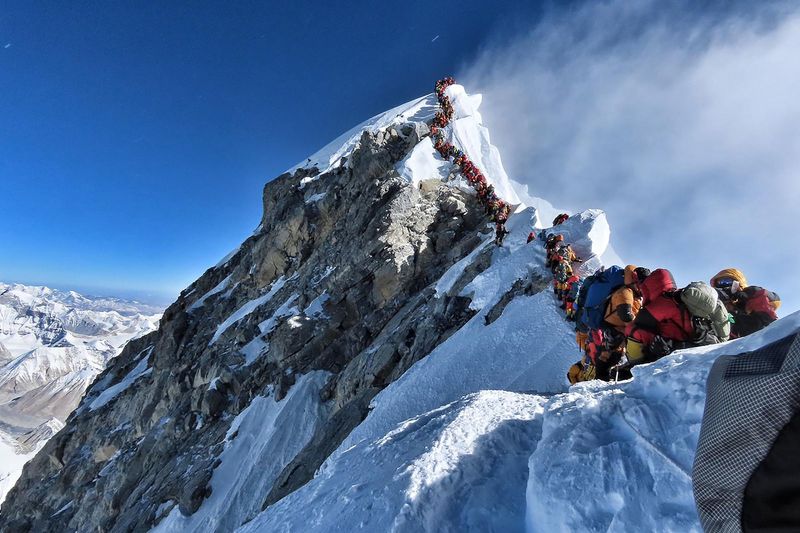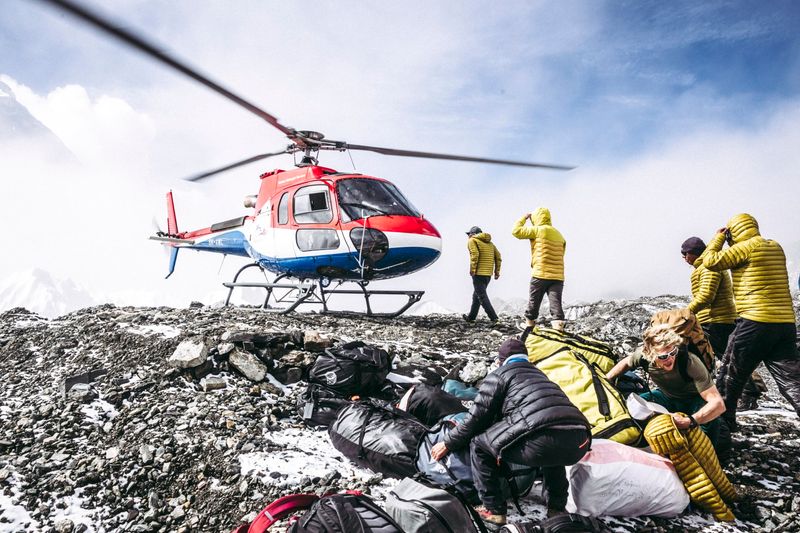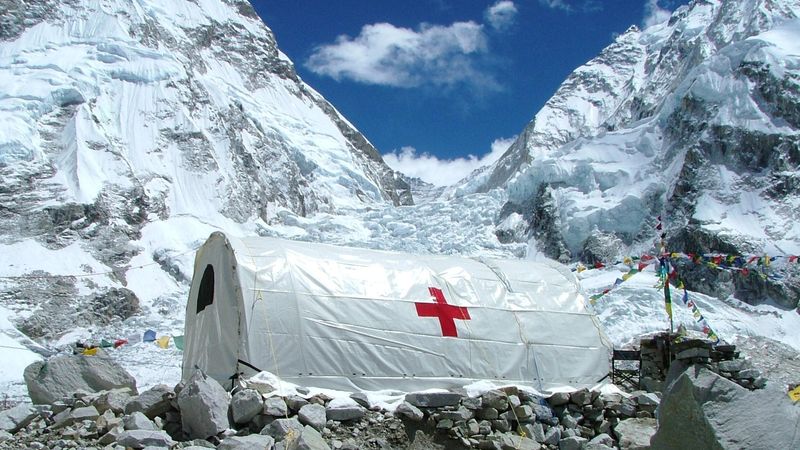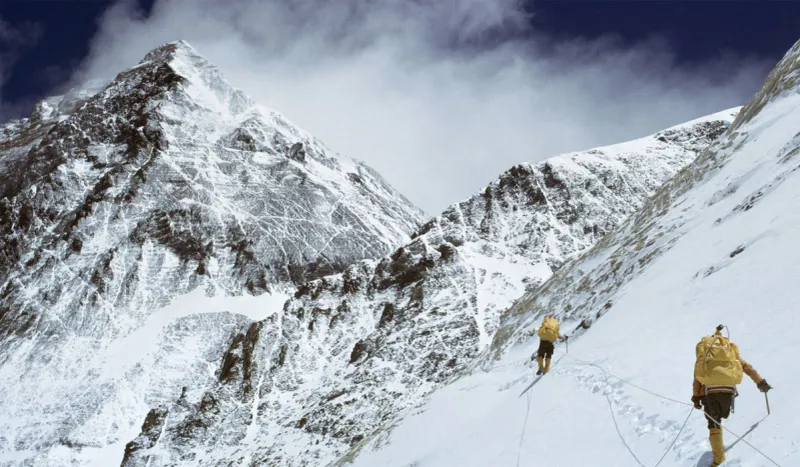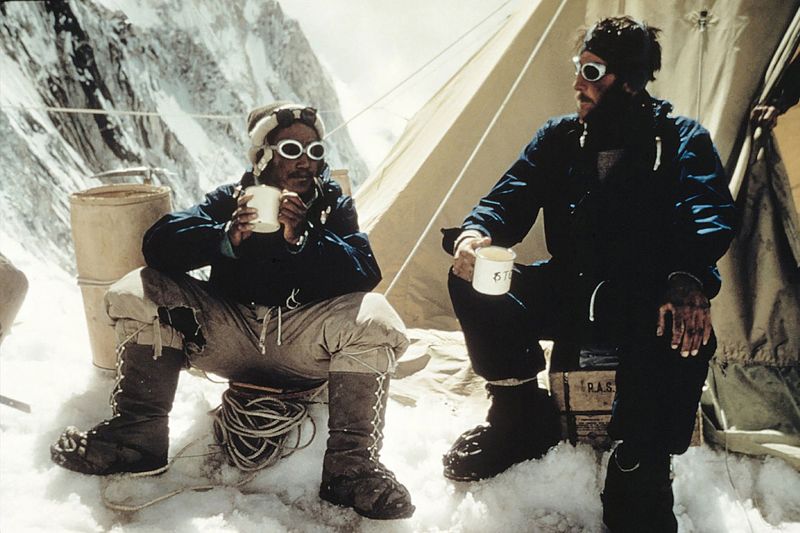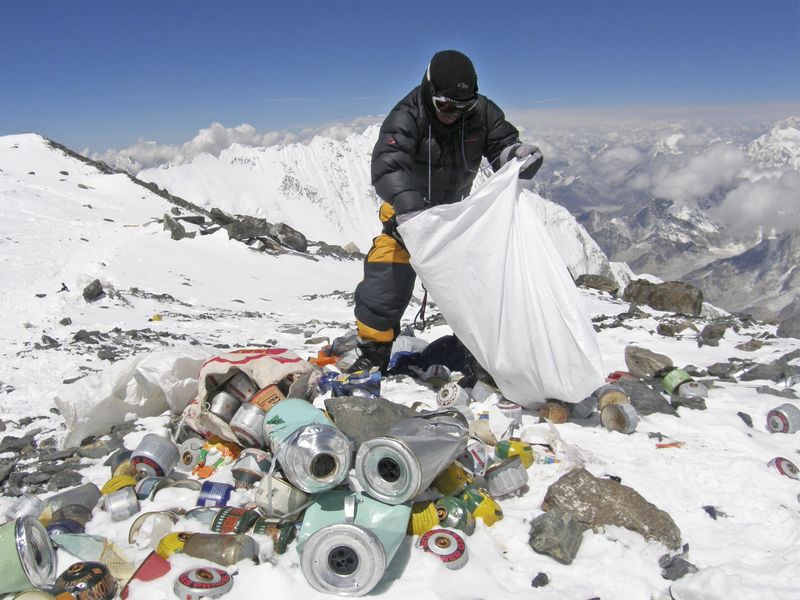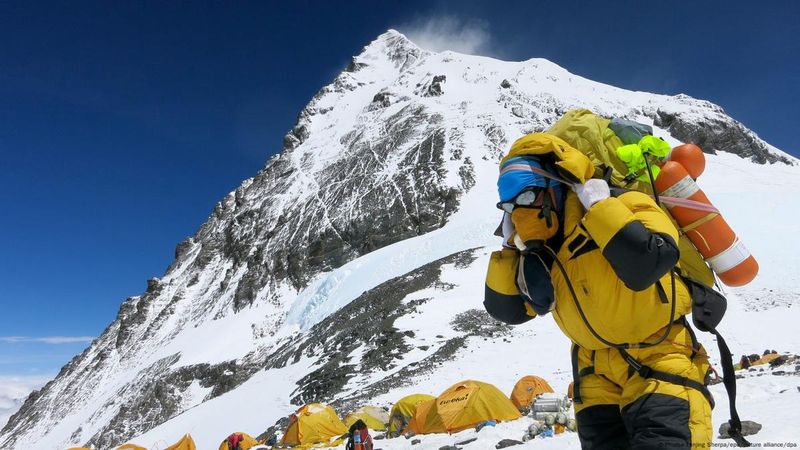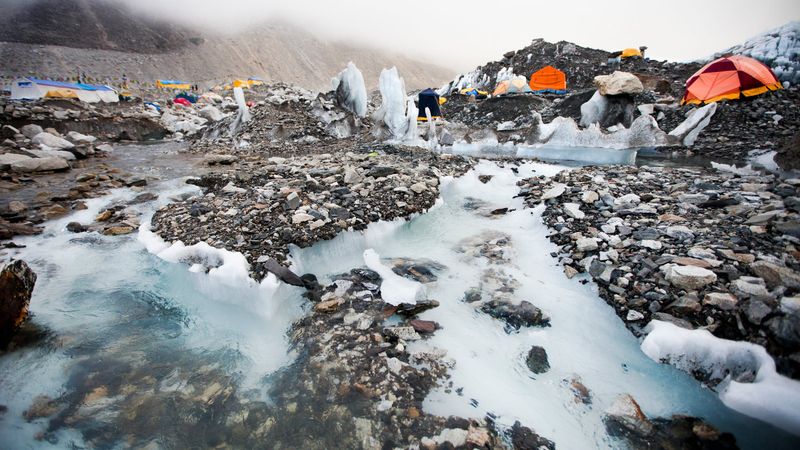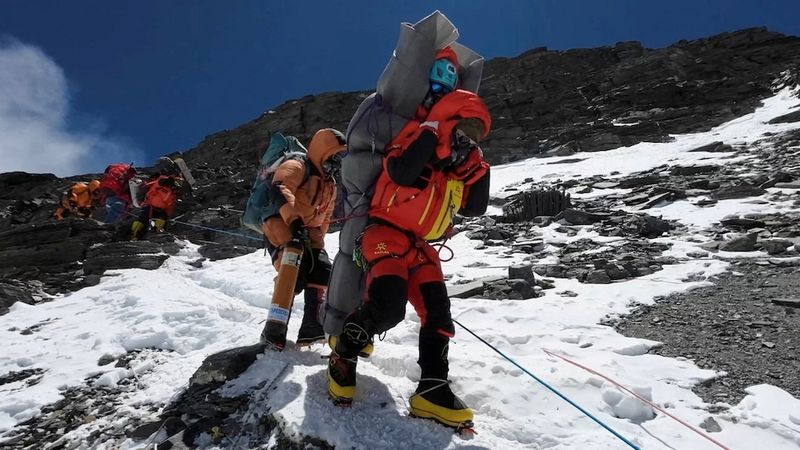Mount Everest stands as the ultimate challenge for mountaineers around the globe, yet its grandeur comes with grave perils. With a history speckled with tragic events, the mountain claims lives due to a myriad of reasons.
From the early expeditions where climbers braved the elements with rudimentary gear, to the modern challenges posed by overcrowding and climate change, Everest remains a formidable adversary.
This post delves into the reasons why this majestic peak has a somber legacy, exploring the factors that contribute to the deaths of those who aim to conquer it.
1. Early Expeditions and High Risks
In the 1920s and 1930s, the allure of Mount Everest was met with the stark reality of its dangers. Pioneers like George Mallory and Andrew Irvine embarked on expeditions with gear far less advanced than what climbers use today.
Imagine braving the unforgiving cold and dramatic elevations without modern clothing or navigational tools. The risks were immense, with every step a gamble against nature’s fury.
Despite the peril, these early adventurers paved the way, their stories etched in the mountain’s icy archives, a testament to human endurance and the high price of ambition.
2. Extreme Altitude and the ‘Death Zone’
Above 8,000 meters, Everest’s apex presents a haunting reality: the Death Zone. Here, oxygen levels fall perilously low, impairing climbers’ physical and mental faculties. Altitude sickness can strike swiftly, leaving climbers disoriented and vulnerable.
Cerebral edema, a severe brain swelling, and pulmonary edema, fluid in the lungs, pose fatal threats. Darkness and disorientation can descend as climbers fight through dizziness, nausea, and confusion.
The Death Zone is a stark reminder of nature’s supremacy, a place where survival hinges on every breath and decision made in the thin, chilling air.
3. Unpredictable Weather
Everest’s weather is notoriously capricious, shifting from tranquil to tempestuous in mere moments. Climbers can be engulfed by sudden storms, where fierce winds and icy snow obliterate visibility.
Imagine being trapped, the once familiar path now lost in a whiteout, temperatures plunging. The mountain’s mood swings make rescue operations incredibly challenging, leaving climbers to fend for themselves against nature’s wrath.
These unpredictable conditions are a harsh aspect of Everest’s challenge, where survival is as much about adapting to the elements as it is about physical endurance and skill.
4. Avalanches and Ice Falls
The Khumbu Icefall on Everest’s Nepal side is a notorious hazard that climbers must navigate. This seemingly frozen cascade is anything but stable. Massive chunks of ice shift unpredictably, releasing avalanches that roar down without warning, burying all in their path.
Visualize the ground trembling beneath your feet, the air filled with a deafening roar as the icy behemoth breaks loose. Surviving this treacherous passage requires precise timing and nerves of steel.
The Icefall’s unpredictable nature is a poignant reminder of the mountain’s power, where every crossing is a perilous dance with fate.
5. Overcrowding and Congestion
In recent years, Everest’s allure has led to overcrowding, with climbers queued like a human chain up the mountain’s narrow ridges. This congestion can prove deadly. In the thin air of high altitudes, delays mean prolonged exposure to harsh conditions, accelerating fatigue and dehydration.
Imagine standing for hours, the chill seeping into your bones, each breath a struggle. In such conditions, the mountain becomes a silent adversary, amplifying risks as climbers jostle for position.
Overcrowding has turned the majestic climb into a bottleneck of peril, where patience and timing are as crucial as skill.
6. Insufficient Training and Preparation
Mount Everest is not for the unprepared. Many climbers underestimate the physical and mental fortitude required, relying heavily on guides. Picture yourself exhausted, every muscle aching, as you grapple with the mountain’s demands.
Poor judgment or lack of acclimatization can transform minor missteps into life-threatening situations. Some adventurers, eager but inexperienced, find the climb’s reality far harsher than anticipated.
Their struggles underscore the importance of rigorous preparation, where understanding one’s limits is as important as the journey itself. Everest is a stern teacher, tolerating no mistakes from those who dare its heights.
7. Commercialization of Climbing
The commercialization of Everest has led to an influx of climbers, often driven by the promise of summiting at any cost. This pursuit sometimes prioritizes success over safety.
Imagine the pressure, both financial and personal, to reach the top despite ominous weather or health warnings. Guides, though experienced, may push boundaries to satisfy client desires, risking their own safety.
This emphasis on achievement can overshadow the mountain’s inherent dangers, turning what should be a carefully calculated endeavor into a dangerous race against time and conditions. Commercialization has thus altered Everest’s landscape, introducing new perils with its promise.
8. Logistical Challenges of Rescue
Rescue operations on Everest are fraught with logistical hurdles. At extreme altitudes, helicopters struggle to maneuver, their rotors battling the thin air. Picture a stranded climber, hoping for salvation as the distant thrum of rotors fills the silence, only to watch the helicopter retreat, thwarted by the elements.
Treacherous terrain further complicates rescue efforts, where avalanches and storms may arise unexpectedly. The mountain’s harsh conditions often leave climbers to rely on their own resourcefulness.
These challenges highlight the isolation faced on Everest, where every ascent is a commitment to self-reliance amidst nature’s indomitable forces.
9. Medical Limitations in Remote Conditions
Medical emergencies on Everest unfold in isolation, with immediate care often out of reach. Altitude sickness strikes unpredictably, and frostbite can set in with alarming speed. Imagine battling nausea and disorientation, far from any medical facility, as your extremities grow numb.
Administering effective treatment on a windswept ridge becomes a desperate endeavor. The mountain’s remote nature exacerbates the severity of injuries, where timely intervention is rare.
Climbers confront a stark reality: survival often hinges on their preparedness and the ability to make critical decisions in the face of adversity, where every moment counts against the ticking clock.
10. Enduring Cultural and Historical Significance
Mount Everest is more than a physical challenge; it is a symbol of human ambition and exploration. Its cultural and historical significance draws climbers from around the world, each hoping to make their mark.
Imagine standing at base camp, surrounded by a tapestry of flags and tributes, feeling the weight of history. The mountain’s allure is as much about the spirit of adventure as it is about conquest.
Yet, this symbolic journey is fraught with peril, where each ascent is a reminder of those who have perished pursuing their dreams. Everest stands as a monument to both triumph and tragedy.
11. The Challenge of Body Recovery
The harsh environment of Everest often prevents the recovery of climbers’ bodies, leaving many as somber landmarks along the route. Imagine the emotional toll of encountering these reminders, frozen in time, a stark testament to the mountain’s danger.
The logistics of body recovery are daunting, with extreme conditions posing significant risks to those attempting retrieval. This reality adds a haunting aspect to the climb, where the mountain’s silence speaks of lost dreams and enduring challenges.
For many, the journey becomes a poignant reflection on mortality, where the price of ambition is etched in ice and stone.
12. Environmental Impact and Degradation
With increased expeditions, Everest faces environmental degradation, where climbers leave behind trash, gear, and human waste. This accumulation disrupts the mountain’s pristine beauty, creating a stark contrast between nature’s majesty and human carelessness.
Visualize scattered debris against the snowy landscape, a canvas marred by neglect. Efforts to clean the mountain face logistical challenges, as removing waste at high altitudes is a formidable task.
Environmental concerns highlight the need for responsible climbing, where preservation should match ambition. Everest’s ecological balance is fragile, demanding respect and stewardship from those who seek its summit.
13. Evolving Policies and Regulations
The mounting fatalities and environmental concerns have prompted changes in policies and regulations on Everest. Nepal and China have introduced stricter rules, including limiting permits and increasing fees.
Picture climbers at base camp, poring over new guidelines, their plans altering with each regulation. These measures aim to enhance safety and preserve the mountain’s ecosystem.
However, the effectiveness of regulations depends on enforcement and climbers’ cooperation. As policies evolve, the balance between accessibility and conservation remains delicate, highlighting the ongoing challenge of managing one of the world’s most iconic natural wonders.
14. Climate Change and Shifting Conditions
Climate change is reshaping Everest’s landscape, with warming temperatures causing glaciers and permafrost to melt. This transformation destabilizes once-reliable routes, increasing the risk of icefalls, avalanches, and rockslides.
Imagine plots of glacial ice shifting beneath your feet, a once-stable path now a precarious journey. Climbers face new uncertainties, where traditional wisdom may no longer apply.
The mountain, ever a challenge, has become an evolving puzzle in the face of climate phenomena. This underscores the urgent need for adaptive strategies in mountaineering, where nature’s shifting patterns demand vigilance and respect from those who dare to tread its heights.
15. Sociocultural Dynamics
The role of Sherpas and local communities is vital in Everest expeditions, yet they shoulder a significant share of the risks. For many, guiding climbers provides crucial income, despite the inherent dangers.
Imagine a Sherpa navigating the treacherous paths with seasoned expertise, balancing tradition with survival. Their contributions are profound, yet often overlooked in the narrative of conquest.
The mountain’s sociocultural landscape is complex, where economic necessity meets cultural heritage. These dynamics highlight the human element in the Everest story, underscoring the interdependence of climbers and the local communities who aid their ambitious pursuits.
